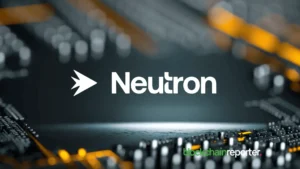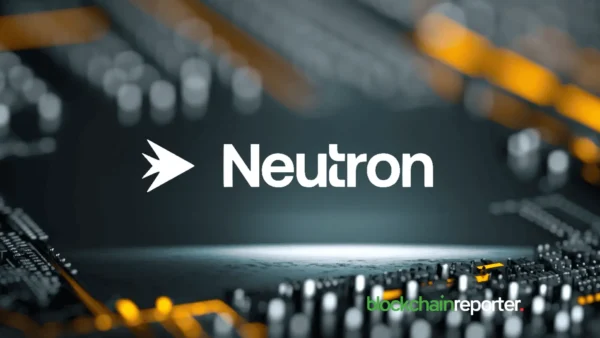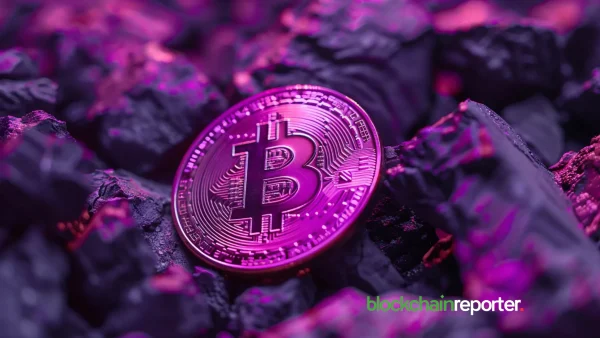
- 1. Understanding Bitcoin Mining
- 2. How Bitcoin Mining Works
- 3. Key Factors Influencing Mining Speed
- 4. Historical Context: Then and Now
- 5. Economics and Profitability of Bitcoin Mining
- 6. Solo Mining vs. Mining Pools vs. Cloud Mining
- 7. Navigating the Crypto Ecosystem
- 8. Institutional Finance and Venture Capital in Crypto
- 9. The Future of Bitcoin Mining
Bitcoin (BTC) is undoubtedly one of the most discussed and valuable digital assets in today’s financial realm. Its mining process—the method by which new coins are introduced into circulation—is both fascinating and complex. In this comprehensive guide, we explore every facet of Bitcoin mining, focusing on the question: How long does it take to mine 1 Bitcoin?
We’ll delve into the inner workings of mining technology, examine the factors that determine mining speed, and look at the economic and historical context that shapes today’s mining environment. Additionally, we’ll touch on broader topics including crypto trading strategies, technical analysis, and even insights into institutional finance and venture capitalism.
Understanding Bitcoin Mining
Bitcoin mining is the process used to validate transactions on the Bitcoin network and to introduce new coins into circulation. At its core, mining involves solving complex mathematical problems with powerful computer hardware—a process known as hashing. When a miner successfully solves one of these puzzles, they add a new block of transactions to the blockchain and are rewarded with newly minted Bitcoin.
The entire system is designed to ensure that new blocks are added approximately every 10 minutes. However, it’s important to note that while the network finds a block every 10 minutes on average, an individual miner’s chance to capture the full reward (currently 3.125 BTC per block after the most recent halving) depends on their share of the overall network’s computational power.
Bitcoin’s mining process is inherently competitive and stochastic (i.e., random), much like a lottery. Even though blocks are created every 10 minutes, the probability that any one miner will find the correct hash and claim the reward depends on their “hash rate” relative to the total hash rate of the network.
How Bitcoin Mining Works
Bitcoin mining involves several key steps:
- Transaction Verification: Every Bitcoin transaction is grouped into a “block.” Miners verify these transactions, ensuring they’re legitimate and preventing double spending.
- Hashing and the Target Hash: Using a cryptographic algorithm (SHA-256), miners combine the data in a block with a variable number (nonce) until they generate a hash that meets a predetermined target. This process requires trillions of attempts, making it computationally intensive.
- Block Rewards: Once a valid hash is found, the miner broadcasts the block to the network. If verified by other nodes, the miner receives a block reward (currently 3.125 BTC) plus any transaction fees included in the block.
Mining Hardware: CPUs, GPUs, and ASICs
In the early days, Bitcoin mining could be performed using ordinary computers. Today, however, competition and increased difficulty have rendered CPUs and GPUs largely obsolete for mining Bitcoin. Instead, specialized hardware called Application-Specific Integrated Circuits (ASICs) is used. These machines are designed solely for mining and offer superior performance in terms of speed and energy efficiency.
- CPUs: General-purpose and versatile but inefficient for mining.
- GPUs: Offer better parallel processing capabilities but still lag behind in efficiency.
- ASICs: Tailor-made for mining; they deliver unmatched hashing power and speed.
ASICs have become the standard for serious mining operations, especially for those trying to mine significant amounts of Bitcoin on their own.
Mining Pools
Given the competitive nature of mining, individual miners rarely earn a full block reward on their own. Instead, most join mining pools—groups of miners who combine their computational power to increase the chance of mining a block. When a block is found, the reward is split among the participants according to their contribution. This pooling of resources allows miners to receive more consistent and frequent payouts, rather than waiting potentially years to mine 1 Bitcoin independently.
Key Factors Influencing Mining Speed
The following are the key factors that influence the mining speed of Bitcoin:
Hash Rate and Mining Difficulty
The hash rate—the speed at which a miner’s hardware can process guesses—is perhaps the most critical factor determining mining speed. A higher hash rate means more guesses per second, increasing the likelihood of solving the block’s puzzle. However, the Bitcoin network dynamically adjusts the mining difficulty approximately every two weeks to maintain an average block time of 10 minutes. As more miners join the network and the combined hash rate increases, the difficulty rises accordingly.
This delicate balance ensures that regardless of the total computing power dedicated to mining, the network consistently produces blocks every 10 minutes on average. For example, if you have a mining rig that represents a very small fraction of the total hash rate, your chances of mining a full block (and therefore 3.125 BTC) decrease dramatically. In fact, solo mining for 1 Bitcoin could take many years for most individual miners.
Example Calculation
Consider a miner with a hash rate of 100 TH/s (terahashes per second) operating in a network with a total hash rate of 150 EH/s (exahashes per second). The miner’s share of the network is roughly 1 in 1,500,000. Statistically, this miner might expect to find one block every 1,500,000 blocks—a period that could equate to decades in real time. Consequently, joining a mining pool becomes a more practical solution for achieving regular, though fractional, payouts.
Energy and Operational Costs
Mining is not free. High-powered ASIC machines consume vast amounts of electricity, and the costs associated with power consumption, cooling, and hardware maintenance can be significant. The economics of mining depend on maintaining a delicate balance between these operational expenses and the revenue generated by mined Bitcoin. In many cases, the profitability of mining is directly tied to the cost of energy in a particular region.
Network and Infrastructure
Latency and network connectivity, while secondary to hash rate and difficulty, also play a role. Efficient communication between mining hardware and the pool server can reduce the chances of wasted work due to outdated information—a crucial factor when operating on narrow profit margins.
Historical Context: Then and Now
Understanding the evolution of Bitcoin’s value provides important context for mining today.
How Much Was Bitcoin in 2016?
In 2016, Bitcoin was still in its growth phase. At that time, the block reward was 12.5 BTC per block—significantly higher than today’s 3.125 BTC after the halving events. During this period, Bitcoin’s price experienced substantial growth; however, it was still relatively accessible compared to modern valuations. Historical data shows that Bitcoin’s price in 2016 fluctuated considerably but generally trended upward as adoption increased. This period was pivotal in setting the stage for Bitcoin’s explosive rise in subsequent years.
How Much Will Bitcoin Be Worth in 2030?
Forecasting Bitcoin’s future value remains highly speculative, but many analysts and enthusiasts believe that Bitcoin’s price will continue to appreciate over the long term. Projections for 2030 vary widely—from conservative estimates that factor in gradual adoption and regulatory developments, to more bullish Bitcoin price predictions that envision BTC as a digital gold standard in a decentralized financial system. Regardless of the specific figures, the trend toward increased scarcity—given that the total supply is capped at 21 million coins—suggests that the value of each Bitcoin could rise dramatically if demand continues to grow.
Economics and Profitability of Bitcoin Mining
Here are the economics and profitability of the process of Bitcoin mining:
The Economics Behind Mining
Bitcoin mining is fundamentally an economic activity. Miners invest in hardware, pay for electricity, and incur other operational expenses, all in the hope that the rewards from mining will exceed these costs. This economic balance is delicate; when the price of Bitcoin is high, more miners are incentivized to join the network, which in turn increases the overall hash rate and drives up mining difficulty. Conversely, if the price falls, some miners may shut down their operations, reducing the hash rate and eventually easing the difficulty.
Many experts observe that the marginal cost of mining tends to align with Bitcoin’s market price over the long term. That is, if Bitcoin trades at, say, $100,000, the cost of mining a new Bitcoin will approximate that value. This dynamic creates a self-regulating mechanism in which mining remains profitable only as long as the market price supports the underlying expenses.
Profitability Challenges
For individual miners, especially those with average hardware, mining 1 Bitcoin on their own might be a decades-long endeavor. Most solo miners would find it more practical to join a mining pool. Pools not only reduce the variance in rewards but also provide a more predictable income stream. Yet, even within pools, profit margins can be thin once all costs are factored in. For many, mining is no longer a hobby but a serious business venture that requires careful planning, significant capital, and ongoing operational management.
Solo Mining vs. Mining Pools vs. Cloud Mining
The following is the difference between different Bitcoin mining processes:
Solo Mining
Solo mining means operating independently without joining a mining pool. While the allure of claiming the full block reward is enticing, the probability of doing so is extremely low for most individuals given the current level of network difficulty and competition. Solo miners essentially work as lone adventurers in a treasure hunt where the odds are overwhelmingly against them.
Mining Pools
As discussed earlier, mining pools allow individual miners to combine their computational power and share the rewards proportionally. This method reduces the randomness of payouts and offers a more stable return on investment. Although miners receive only a fraction of the block reward, they benefit from consistent, smaller payouts over time.
Cloud Mining
Cloud mining services offer another alternative. Instead of purchasing and managing hardware, users can lease hash power from a cloud mining provider. This model reduces the initial capital expenditure and simplifies operational challenges. However, cloud mining comes with its own set of risks, including potential scams, lower transparency, and contractual uncertainties.
Navigating the Crypto Ecosystem
Now, let’s see how to navigate the crypto market along with Bitcoin mining:
How to Trade Crypto
Understanding Bitcoin mining is only one piece of the broader cryptocurrency puzzle. Many individuals interested in mining also explore trading crypto. How to trade crypto effectively is an essential skill in today’s digital asset landscape. Successful crypto trading often requires:
- Fundamental Analysis: Understanding the underlying factors that affect a coin’s value.
- Technical Analysis: Learning how to read crypto charts to identify trends and potential entry/exit points. (More on this in the next section.)
- Risk Management: Ensuring that no single position represents an undue percentage of your portfolio.
By integrating mining with trading strategies, investors can create diversified approaches to capitalizing on the dynamic world of cryptocurrencies.
How to Read Crypto Charts
For anyone interested in how to read crypto charts, several key indicators and tools can help simplify the process:
- Price Charts: Line, candlestick, or bar charts that display historical price movements.
- Volume Indicators: Measures of trading volume, which can indicate the strength of a price movement.
- Technical Indicators: Tools such as moving averages, RSI (Relative Strength Index), MACD (Moving Average Convergence Divergence), and Bollinger Bands help traders understand momentum and potential reversal points.
- Support and Resistance Levels: These are key price points where the market tends to pause or reverse.
- On-Chain Data: Advanced traders often look at network-specific data such as hash rate, transaction volume, and active addresses.
Learning how to read crypto charts is crucial for those looking to make informed trading decisions in the volatile crypto market .
Institutional Finance and Venture Capital in Crypto
Institutional involvement in the crypto market has grown significantly over the years. Financial giants like BlackRock have shown increasing interest in digital assets. While the exact valuation of institutions such as BlackRock is subject to market fluctuations, their involvement adds a layer of credibility and liquidity to the crypto space. For investors and miners alike, understanding how much is BlackRock worth and their role in the broader financial ecosystem can provide valuable insights into market trends and potential future developments.
The rapid growth of the cryptocurrency market has not only attracted individual miners and traders but also venture capitalists looking to invest in the next big blockchain startup. If you’re wondering how to become a venture capitalist in the crypto space, consider the following steps:
- Education and Research: Gain a deep understanding of blockchain technology, market trends, and startup ecosystems.
- Networking: Connect with industry leaders, attend conferences, and participate in online communities.
- Investment Strategy: Develop a clear investment thesis that outlines what you’re looking for in a blockchain startup.
- Capital Accumulation: Building up a sufficient capital base is critical, as early-stage investments in crypto startups can be risky.
- Due Diligence: Conduct rigorous due diligence on potential investments, considering both technical and market factors.
By following these steps, you can position yourself to tap into the burgeoning world of crypto venture capital and potentially support the next wave of innovation in the digital economy.
The Future of Bitcoin Mining
While Bitcoin continues to grow, so too does the technology behind mining. Future advancements in ASIC design, improvements in energy efficiency, and the integration of renewable energy sources may all contribute to reducing the operational costs of mining. These innovations could help stabilize or even reduce the time it takes to mine 1 Bitcoin, particularly for large-scale operations.
One of the most pressing concerns about Bitcoin mining is its environmental impact. As the network’s energy consumption continues to grow, there is increased pressure to develop sustainable mining practices. Innovations in renewable energy and more efficient hardware can mitigate some of the environmental costs associated with mining, potentially changing the economics of the industry for the better.
Government regulations are another critical factor influencing the future of Bitcoin mining. As regulators around the world continue to scrutinize the industry, changes in policy could either foster innovation or impose additional challenges for miners. Keeping an eye on regulatory trends is essential for anyone involved in the crypto space, whether you are mining, trading, or investing.
The question “How long does it take to mine 1 Bitcoin?” does not have a straightforward answer. It depends on a myriad of factors—from the type of hardware and mining method employed, to the overall network hash rate and difficulty adjustments implemented by the Bitcoin protocol. For the individual miner with average equipment, mining a full Bitcoin solo could take decades. However, by joining a mining pool or utilizing cloud mining services, miners can achieve more regular payouts, albeit in fractional amounts.









